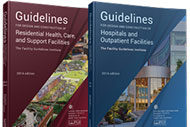CMS releases final emergency preparedness rule for hospitals
The Centers for Medicare & Medicaid Services (CMS) recently released a final rule bolstering emergency preparedness requirements for hospitals and other critical facilities. Recent national disasters prompted the agency to increase requirements for health care facilities in the Medicare Conditions of Participation. In the rule, CMS finalized its proposal requiring hospitals to conduct a comprehensive all-hazard risk assessment and act to mitigate the risks identified and to work with their community to be ready. The agency provided flexibility to hospitals in locating new generators and not requiring relocation of existing generators. Further, CMS will not require increased hours of testing, as it had originally proposed, because it noted there was no evidence such testing would improve facilities’ ability to deal with a disaster, such as Hurricane Sandy. “We are pleased that CMS has taken a commonsense approach to ensuring patients continue to be cared for in times of disaster,” says Ashley Thompson, the American Hospital Association's senior vice president for public policy analysis and development.
FDA issues safety recommendations for programmable syringe pumps
The Food and Drug Administration (FDA) recently issued recommendations to reduce safety risks when using programmable syringe pumps to infuse therapies at low rates, when a lack of flow continuity can result in serious clinical consequences, including delay of therapy, overinfusion or underinfusion. Since March 2013, the agency has received more than 300 Medical Device Reports (MDRs) associated with programmable syringe pump use. Of the 100 MDRs that provided information on the infusion rates, the majority noted infusions at rates of 5 milliliter per hour or less. “Based on current information, the FDA believes that the overall benefits of programmable syringe pumps outweigh their risks,” the agency stated. “Moving forward, the FDA has requested that manufacturers make labeling changes to their syringe pumps to address flow continuity concerns.”
AHA urges CMS to delay site-neutral policy until it ensures fair payment
The Centers for Medicare & Medicaid Services should delay implementing the site-neutral provisions of the Bipartisan Budget Act of 2015 until it can provide fair and equitable payment to hospitals for non-excepted services, the American Hospital Association (AHA) told the agency in early September, commenting on the hospital outpatient prospective payment system proposed rule for calendar year 2017. The hospital field and more than half of the U.S. House and Senate this spring urged CMS to provide reasonable flexibility when implementing the site-neutral provisions in order to ensure that Medicare patients have continued access to the highest-quality hospital outpatient care in their communities, wrote AHA Executive Vice President Tom Nickels. “Instead, CMS has proposed a shortsighted and unworkable set of policies that provide no reimbursement directly to hospitals in CY 2017 for the services they provide to Medicare beneficiaries,” Nickels wrote. Among other changes to the proposed rule, AHA recommends that CMS allow excepted hospital outpatient departments (HOPDs) to relocate and rebuild without triggering payment cuts; protect hospitals’ ability to offer expanded lines of service without a loss of reimbursement; and allow hospitals to transfer ownership of individual HOPDs and maintain their excepted status.
Report warns of potential shortage of medical isotope
Global supplies of an isotope used in medical diagnostic imaging will fall substantially when a Canadian reactor stops producing it at the end of October, according to a report by the National Academies of Sciences, Engineering, and Medicine. Nearly all of the world’s supply of molybdenum-99 is produced by seven research reactors in Australia, Canada, Europe and South Africa. The isotope is distributed through an international supply chain at least weekly because it cannot be stockpiled. “Current efforts to increase the supply of molybdenum-99 by expansion of existing overseas production and initiation of domestic production by methods not requiring highly enriched uranium are important to ensure future availability,” said S. James Adelstein, M.D., chair of the committee that produced the report and a professor of medical biophysics at Harvard Medical School. “Although there are plans from both existing international suppliers and potential domestic suppliers to fill the expected supply gap from Canada, the committee is concerned that any delays in bringing additional supplies of molybdenum-99 to the market would increase the risks of substantial shortages.”
New fire drill matrix can help to prevent Joint Commission findings
The Joint Commission is asking hospitals to use a new fire drill matrix to track when fire drills were conducted in an effort to ensure they comply with Joint Commission and Centers for Medicare & Medicaid Services requirements to hold drills under various conditions (times and days), according to a report in the American Society for Healthcare Engineering’s ASHE Insider e-newsletter. The matrix is available on the ASHE website so that hospitals can proactively complete the matrix, track their fire drills, and work to vary times and days of drills.
ASPR issues tips for retaining, caring for facility staff after a disaster
The Department of Health & Human Services’ Office of the Assistant Secretary for Preparedness and Response issued tips to help health care facilities retain and care for staff after a disaster, such as the recent flooding in Louisiana. “The aftermath of a disaster can be traumatic,” the resource notes. “People may want to return to work, but may be hampered by injury, caring for loved ones, or unable to access transportation. These tips can help health care facility executives provide support for those who care so much for others, ensuring the continuity of a healthy, safe workforce and a resilient community at large.”





